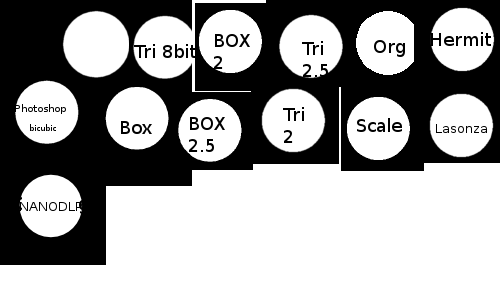You are not logged in.
- Topics: Active | Unanswered
Pages: 1
#1 2017-05-17 17:52:07
- lenne0815
- Member
- Registered: 2017-05-17
- Posts: 38
Supersampling anti aliasing
Hey Shahin, as i understand your using multisampling aa with 8 samples pp, how does that compare to a 2x ss image ? I wanted to try it by myself but as i cant get non aaed picture as base material i cant try it unfortunately.
Last edited by lenne0815 (2017-05-17 17:52:38)
Offline
#2 2017-05-18 04:36:09
- Shahin
- Administrator
- Registered: 2016-02-17
- Posts: 1,834
Re: Supersampling anti aliasing
Anti-aliasing was one of the first nanodlp features. I have tried lots of algorithms, you can see some of the results below.
As you see quality wise it is equal to 8x rendering + bicubic resizing. Unfortunately I have not keep all the results but it was very clear our current algorithm generates best combination of quality and performance for SLA printing.

Offline
#3 2017-05-18 17:09:05
- lenne0815
- Member
- Registered: 2017-05-17
- Posts: 38
Re: Supersampling anti aliasing
Thanks for that info shahin, so i do have to trust you ![]() I just noticed that long borders running along the pixel intersections give problems with antialiasing but that might be more an aligning problem than a software one, i just wanted to see how supersampling would deal with it.
I just noticed that long borders running along the pixel intersections give problems with antialiasing but that might be more an aligning problem than a software one, i just wanted to see how supersampling would deal with it.
Offline
#4 2017-10-22 21:41:29
- Jean-Philippe
- Member
- Registered: 2017-10-22
- Posts: 1
Re: Supersampling anti aliasing
Is that only a 2d anti-aliasing computed for each slice? if so, it doesn't calculate the pixel grey scale gradient for Z axis, but only XY.
Any plan on supporting a true XYZ anti-aliasing?
I would imagine something like multiple axis slicing pre-computation on Z and X (or Z and Y) then combine the anti-aliasing of both axis to generate the correct Z slice anti-aliasing. Does it make sens?
Offline
#5 2017-10-23 07:54:13
- Shahin
- Administrator
- Registered: 2016-02-17
- Posts: 1,834
Re: Supersampling anti aliasing
It depends right now LCD printers could have such high resolution support AA is not needed and maybe even counterproductive.
We could support XYZ AA but majority of users XY resolution is lower than Z resolution so effect would not be noticeable in my opinion.
Offline
#6 2017-10-25 02:59:31
- Yianni-VJ
- Member

- Registered: 2016-05-24
- Posts: 59
Re: Supersampling anti aliasing
I have an Autodesk Ember, it uses Netfab for slicing witch does Antialias in Z.
Surface quality does benefit despite the lower resolution light engine.
I can provide a sliced file if you want to examine the .png files.
Offline
#7 2017-10-25 03:09:34
- Shahin
- Administrator
- Registered: 2016-02-17
- Posts: 1,834
Re: Supersampling anti aliasing
Sure it will be helpful if we could have both AA on A axis on and off. And also difference in printed piece.
Offline
#8 2017-10-25 03:54:47
- Yianni-VJ
- Member

- Registered: 2016-05-24
- Posts: 59
Re: Supersampling anti aliasing
Done
Offline
Pages: 1